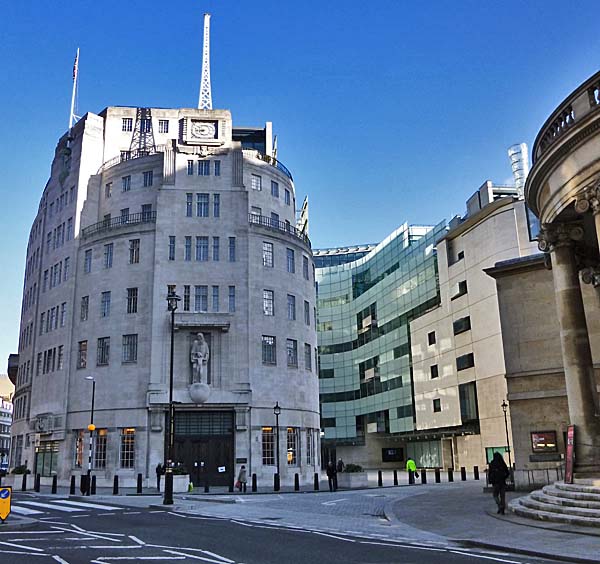|
Broadcasting
House - Regent Street, London, UK
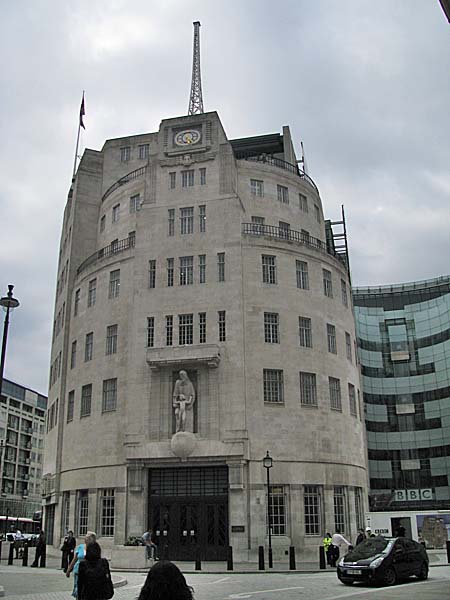
Let us begin ("Are you sitting
comfortably?") by looking at the original
Broadcasting House building.
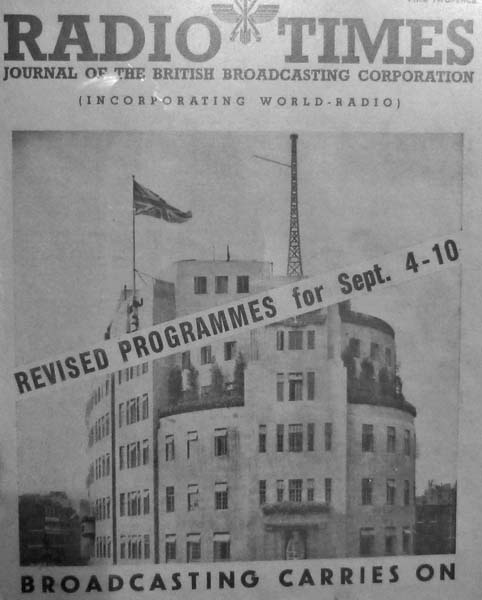 It has been given a variety of appellations including: "The Top Hat", "The New Tower of London" and, because it resembles the prow of a ship, "this battleship of modernism". Much of the building was constructed of steel with a Portland stone cladding. Since the steel frame would transmit sound, a central core was constructed with an outer shell of brick. The broadcasting studios were created within this central core. At the heart of the building is the BBC Radio Theatre which, because of it is in the centre of the building, was actually used as a shelter for BBC employees during WWII and is still in use today broadcasting radio and red button TV programs and concerts. Whilst it has been adapted to the needs of a broadcaster in the 21st Century, it still retains many of its Art Deco features. 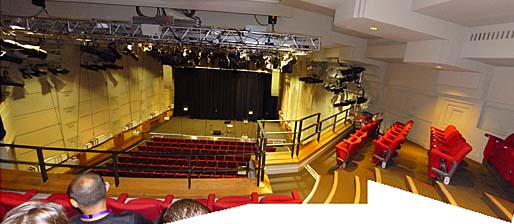 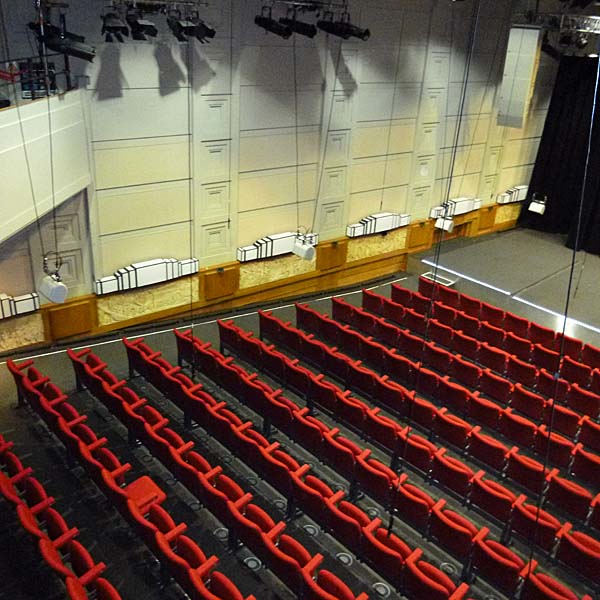 During the development of the
new building, the foyer of the old building was
restored to original splendor if you ignore the
glass wall that has been added for security
purposes.
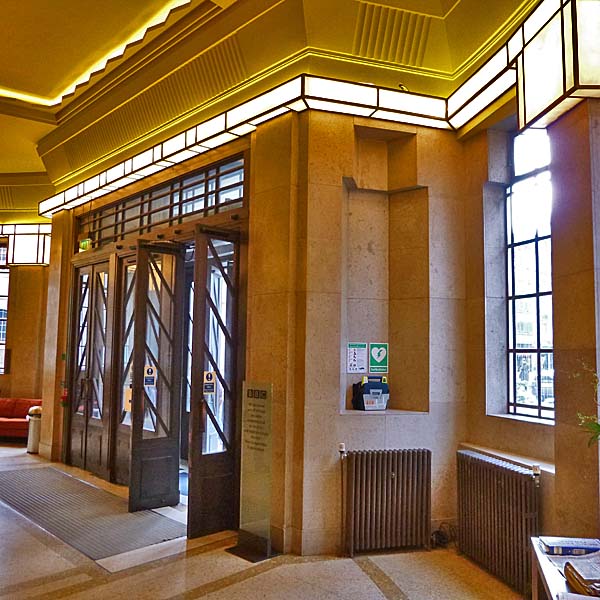 A sign in Latin declares, apparently, that it is "a temple of the arts and muses”. 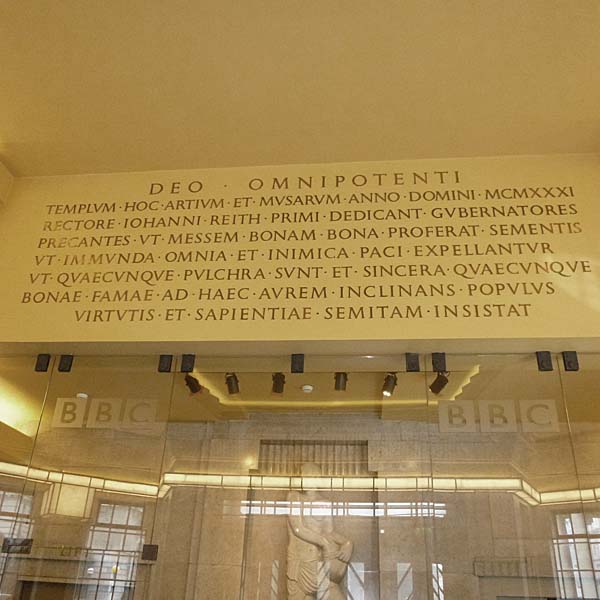 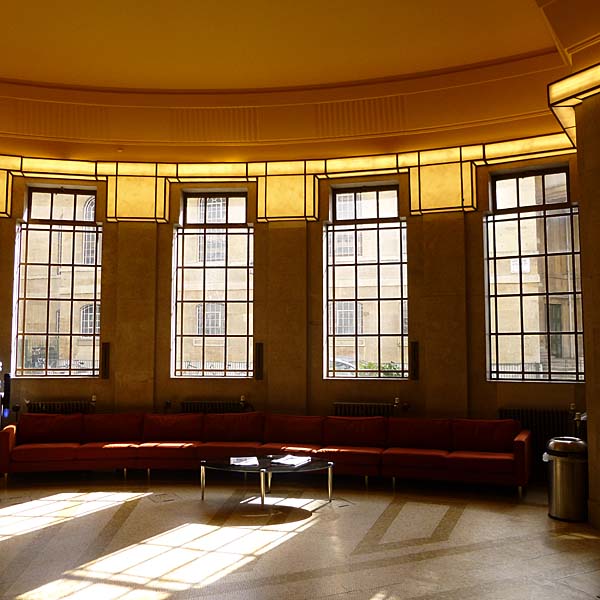 The original BBC logo is displayed in the mosaic floor and in the design on the entrance doors. 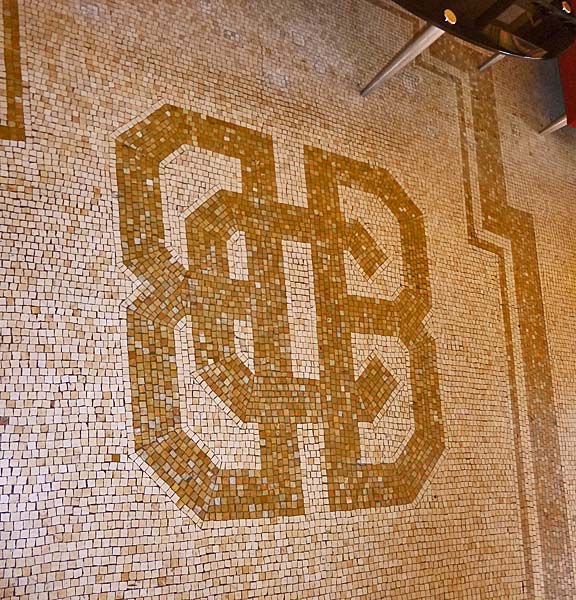 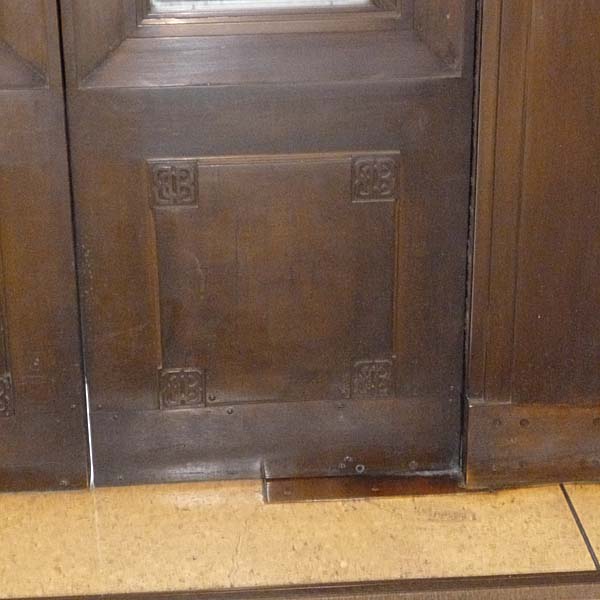 A statue, by Eric Gill, in
the foyer depicts a person who is broadcasting
seeds as the BBC broadcasts to the World.
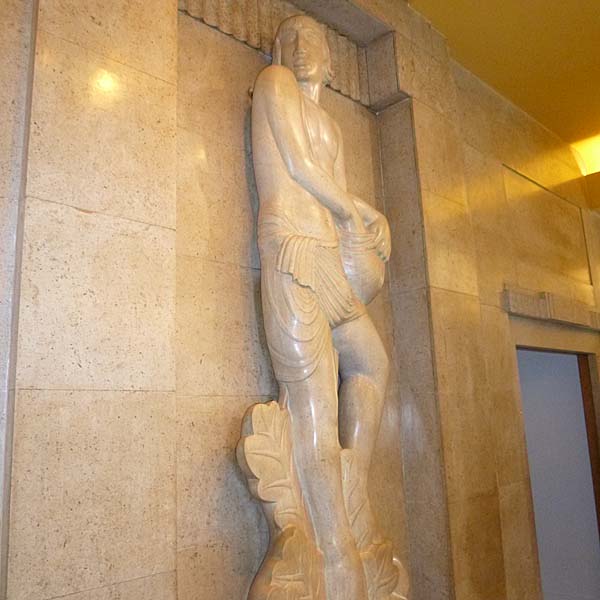  On the building's side you can see Ariel listening to celestial music 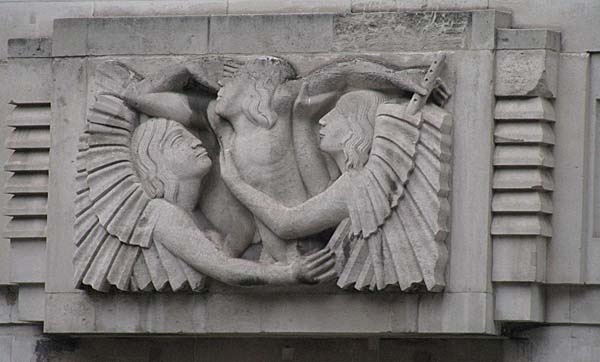 Below: Ariel between Wisdon and Gaiety 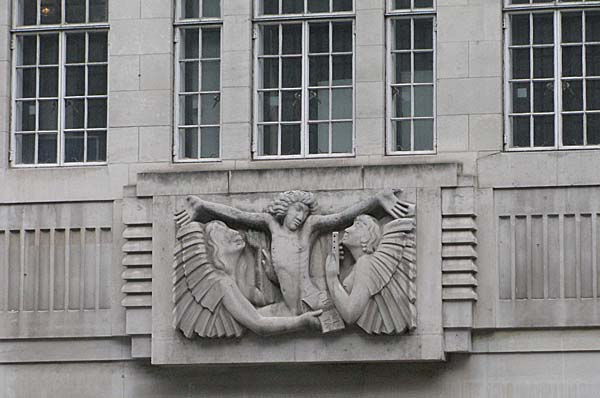 Ariel piping to the children. 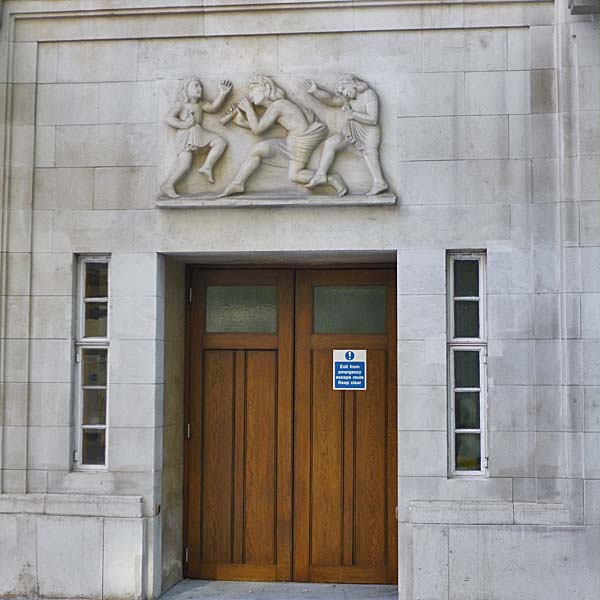 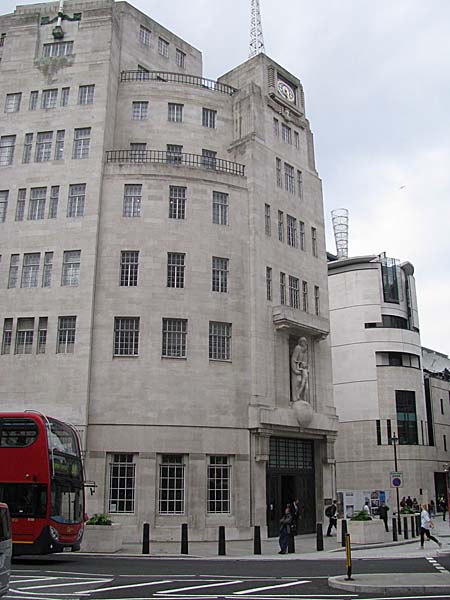  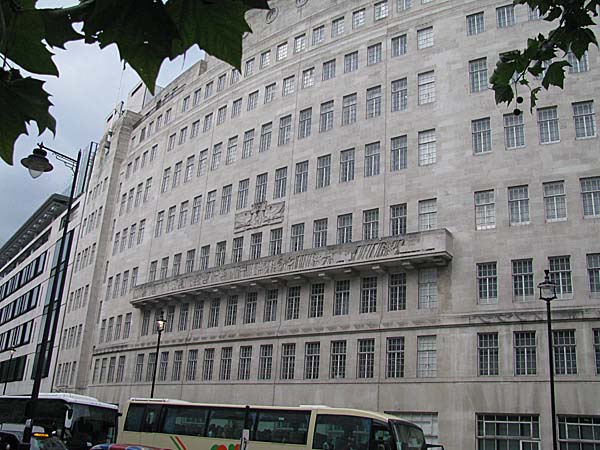 Above
and below you can see the BBC Crest between floors on
the Portland Street side. The motto reads,
"Nation Shall Speak Peace Unto Nation".
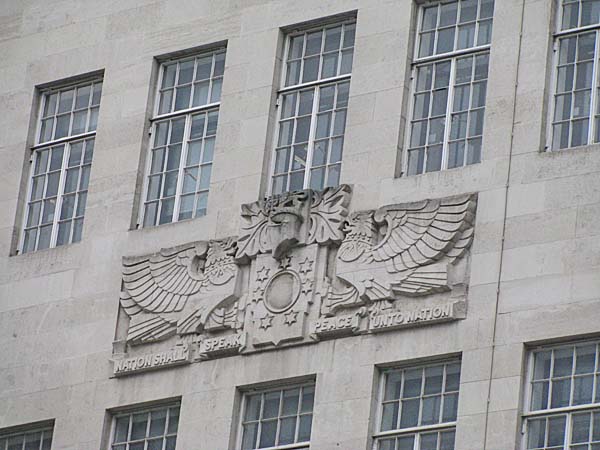 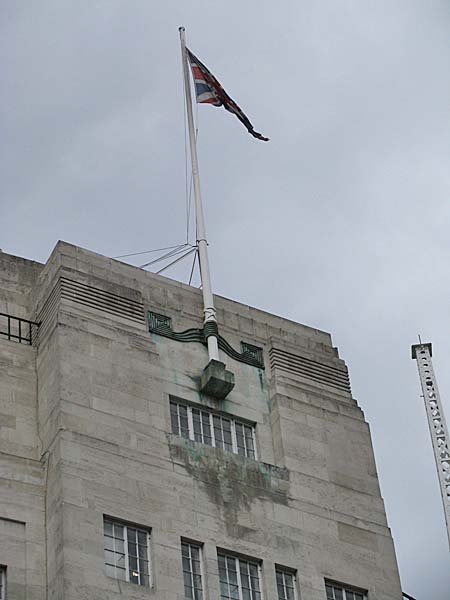 *********************** Viewed from the air you can see just how huge it is. 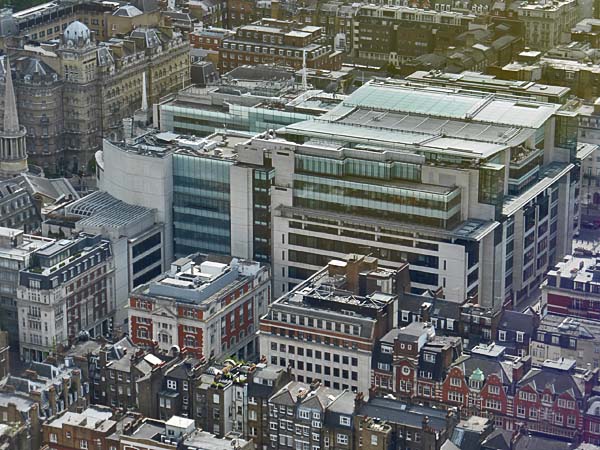 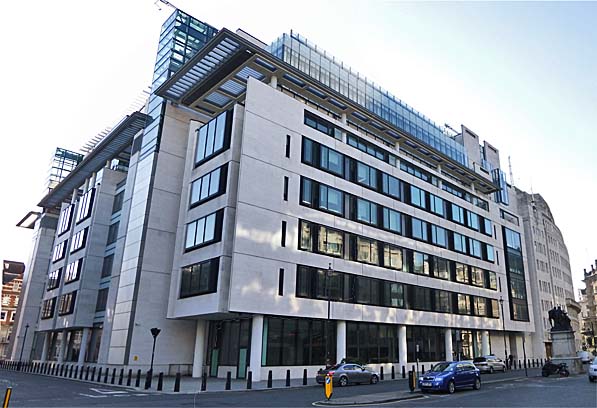 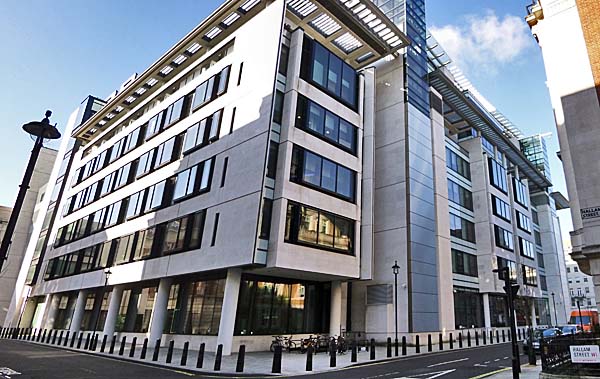 As with the old building there
was obviously a concern about traffic noise.
You can see that the designer appears to have
responded by creating a significant buffer between
external and internal windows.
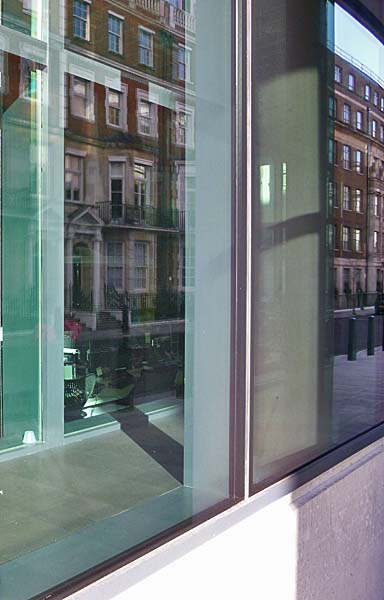 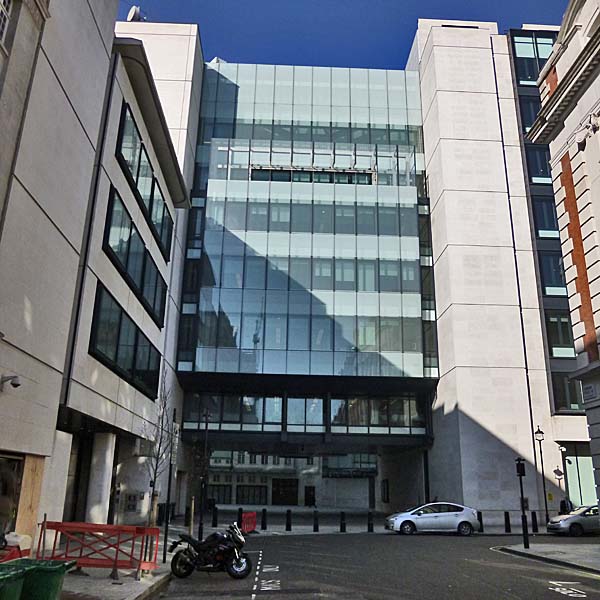 MJP, the architects of the new
extension, say this about their work, "Our
largest project to date is to repair and refurbish
the Grade II* listed 1930's building and to extend
it substantially to accommodate staff from BBC
News, Radio, Music and the World Service. We
aim to create an extremely adaptable and flexible
building that inspires creative people, promotes
collaborative working and provides a sympathetic
working environment that attracts high-calibre
employees."
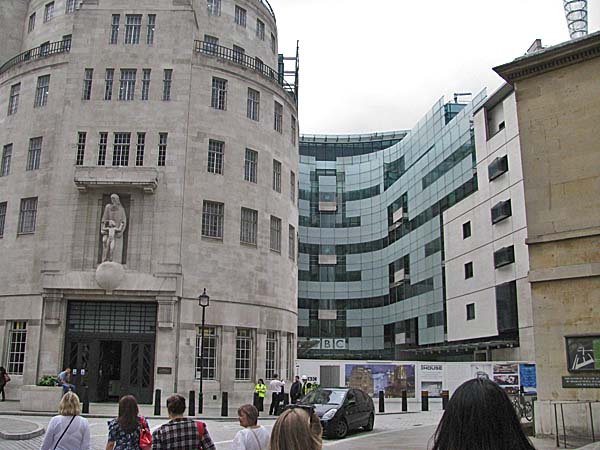 "The new build component of the
design comprises of 80,000sqm of production areas,
studios and various staff facilities. A 4000sqm
newsroom will be an exciting and theatrical
workspace at the heart of the extended building. The
design maximises floor space and will create a
building which has very efficient net:gross floor
area ratios and an excellent BREEAM rating.
Once the redevelopment is finished, Broadcasting
House will contain one of the largest live news
broadcast centres in the world" 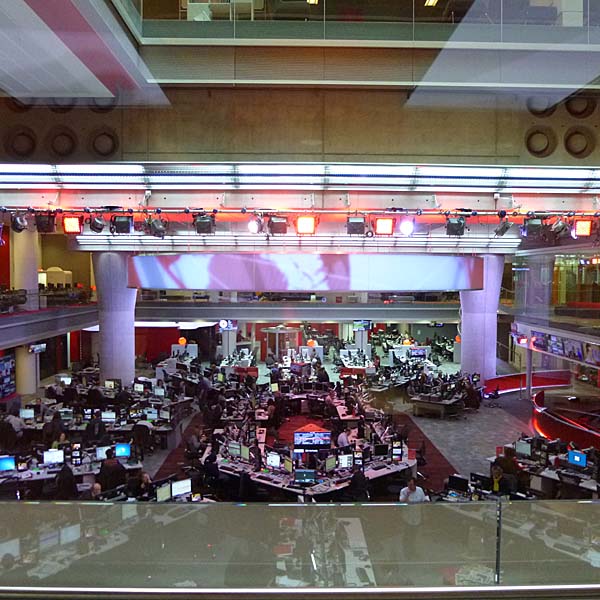 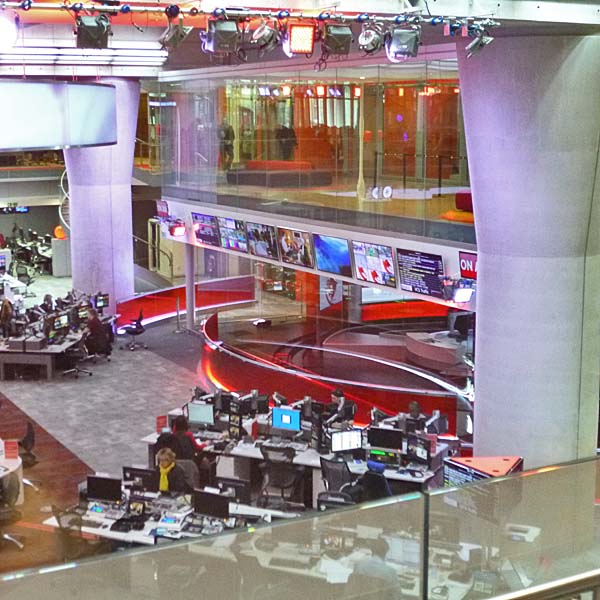  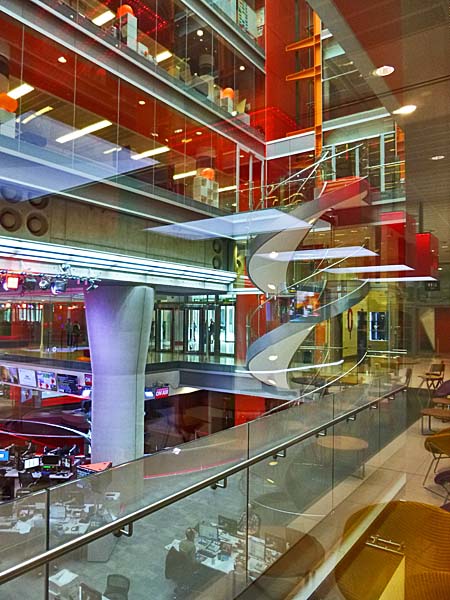 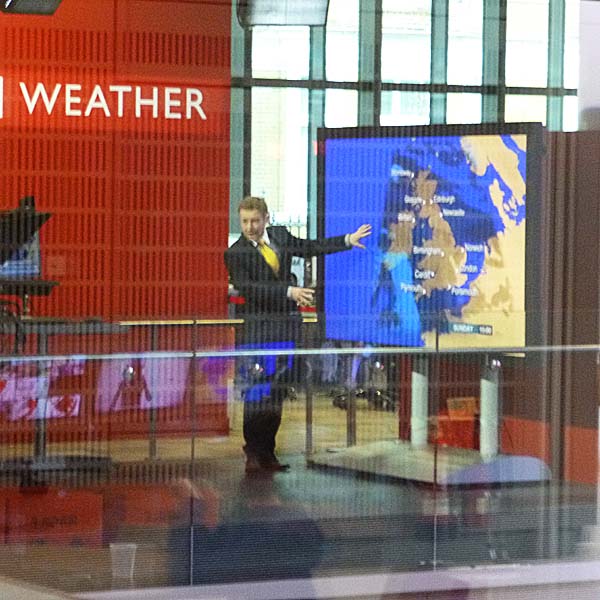 The roof of the original building is graced by a clock and a symbolic aerial tower. 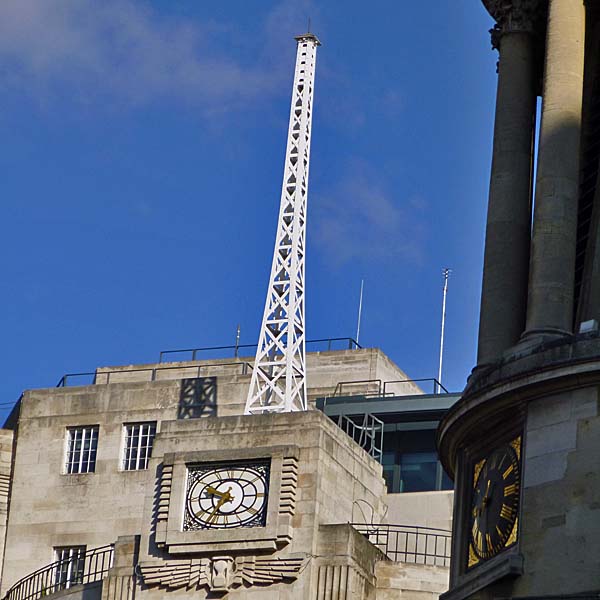 The new wing has its own 10 metre
high inverted tower of glass entitled
"Breathing". Around the tower are the words "Silence
is a voice, our voice. Silence is a body, our
body". It was created by the
Catalan artist Jaume Plensa and it is an
international memorial to reporters and crew who
have died while reporting the news. The BBC
website says that, "During the hours of
darkness the cone is lit so that it glows, and
then every day, in tandem with the 10 o'clock
news bulletin, a fine beam of light projects
from its base approximately 900 metres into the
night sky."
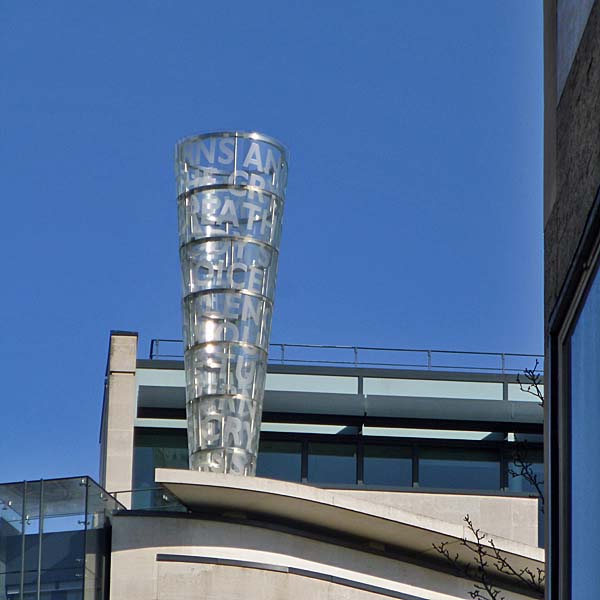 The public piazza is home to a piece of art entitled "World" created by the Canadian Mark Pimlott. "It consists of over 750 stone flags inscribed with place names from around the world, and enhanced by elegant steel lines of longitude and latitude. In addition, there is a subtle scheme of small embedded lights and some audio installation linked to key output from the World Service." 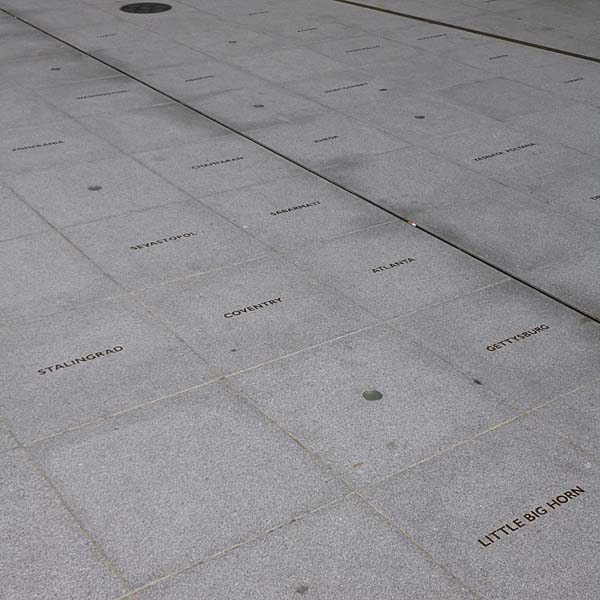 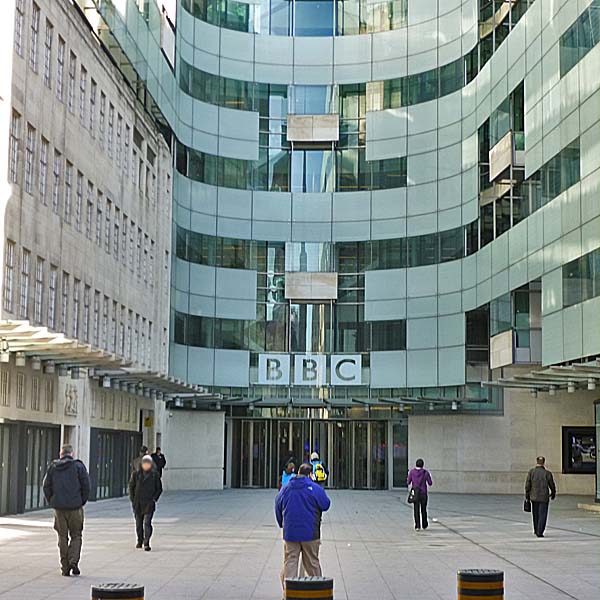
***********************
Some other views of the
building.
Below the Media Cafe 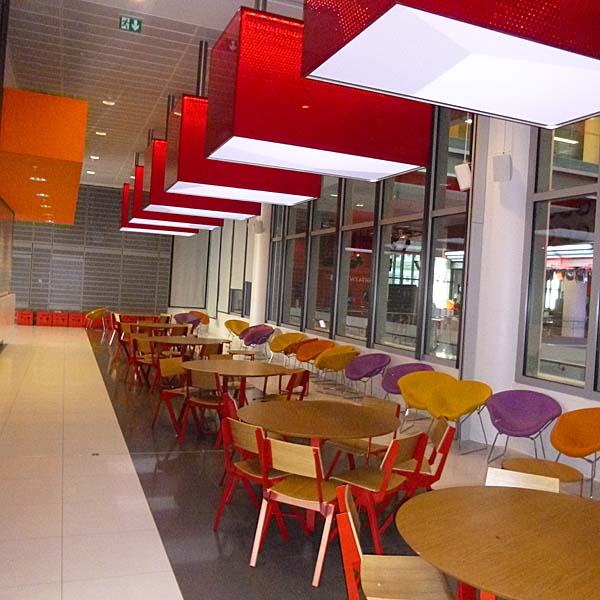 The new Reception area. 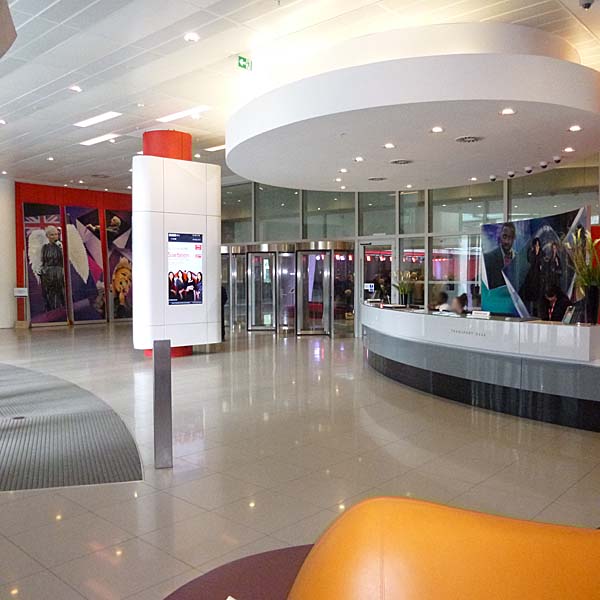 Close Window 
|
||||||||||
